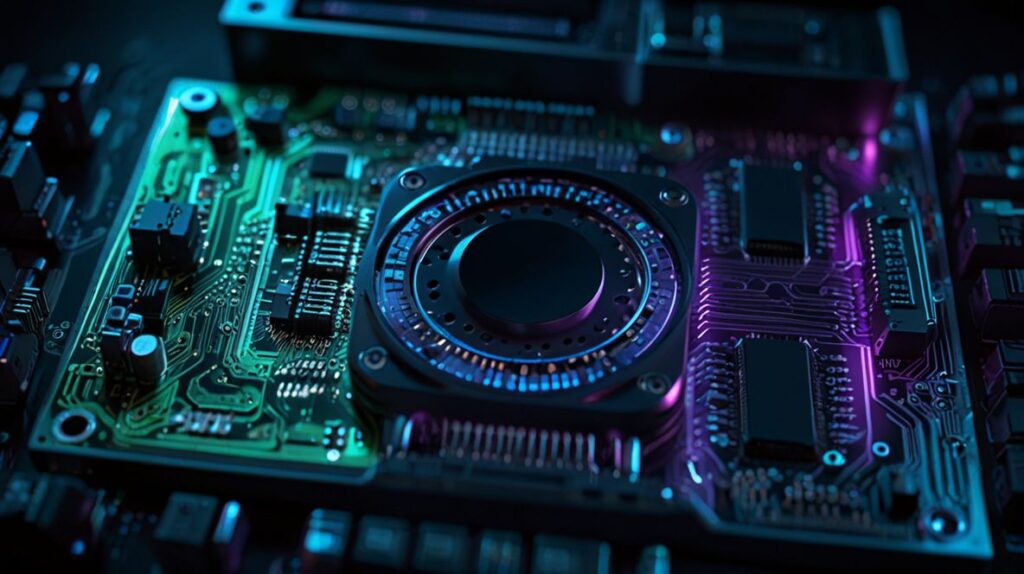Graphics cards have come a long way since their inception, transforming from basic video output devices to powerful, multifunctional processors that play a critical role in gaming, design, AI, and machine learning. As we approach 2025, the development of graphics cards is not just about improving frame rates or visual quality in games; it’s about pushing the limits of digital performance across industries.

One of the most significant changes in recent years is the introduction of AI-powered graphics cards. Companies like NVIDIA and AMD have shifted the focus of their hardware to support advanced artificial intelligence and deep learning tasks, which are becoming increasingly prevalent in sectors beyond gaming, such as autonomous driving, medical imaging, and even financial forecasting. These GPUs are designed to handle massive datasets and complex algorithms, making them an indispensable tool for developers and researchers in AI fields.
In 2025, graphics cards are becoming even more integral to cloud computing and virtual reality (VR) experiences. With the growing adoption of cloud gaming platforms and the rise of VR technologies, users expect seamless, immersive experiences with minimal latency. Graphics cards in data centers are powering these services, ensuring that players across the globe can enjoy high-quality gameplay without the need for an expensive, high-end PC setup.
The Rise of Ray Tracing and Realistic Graphics
Ray tracing technology has seen tremendous improvement over the last few years, providing users with a more realistic rendering experience. In 2025, ray tracing is becoming more accessible to mainstream gamers, as graphics cards capable of real-time ray tracing are now a standard feature even in mid-range products. This breakthrough enhances lighting, shadows, reflections, and textures, making game environments look incredibly lifelike.
Moreover, 8K gaming is gradually becoming a reality. While 4K was once the gold standard for high-definition visuals, the demand for even higher resolutions is pushing the limits of current graphics card technology. Manufacturers are racing to develop GPUs that can support 8K gaming at higher frame rates, providing players with the most immersive and detailed gaming experiences yet.
Energy Efficiency and Environmental Considerations
As graphics cards grow in power, they also consume more energy, leading to concerns about their environmental impact. In response, many companies are focusing on making their GPUs more energy-efficient. With the rise of sustainable gaming, manufacturers are exploring ways to reduce the carbon footprint of their products. In 2025, many new graphics cards are equipped with AI-driven power-saving features, optimizing energy consumption based on workload and ensuring that users can enjoy top-tier performance without compromising on environmental responsibility.
The Future of AI and Blockchain
As AI continues to evolve, so too will the role of graphics cards. The future of blockchain technology and cryptocurrency mining also relies heavily on powerful GPUs. Graphics cards have been at the heart of the mining revolution, and with advancements in blockchain systems and decentralized applications (dApps), GPUs are expected to remain central to the infrastructure of the digital economy.
What’s Next for Graphics Cards in 2025?
Looking ahead, it’s clear that graphics cards will continue to evolve and diversify. While gaming will remain their primary use case, AI, blockchain, and cloud computing will increasingly define the next generation of GPUs. The next few years will likely bring quantum computing breakthroughs, which may revolutionize how GPUs interact with data and applications.
As consumers demand more power, efficiency, and versatility from their hardware, the graphics card market will only get more competitive, with innovations that will shape industries well beyond gaming. The future of graphics cards is not just about better graphics—it’s about changing the way we interact with technology in ways we’ve only just begun to explore.
